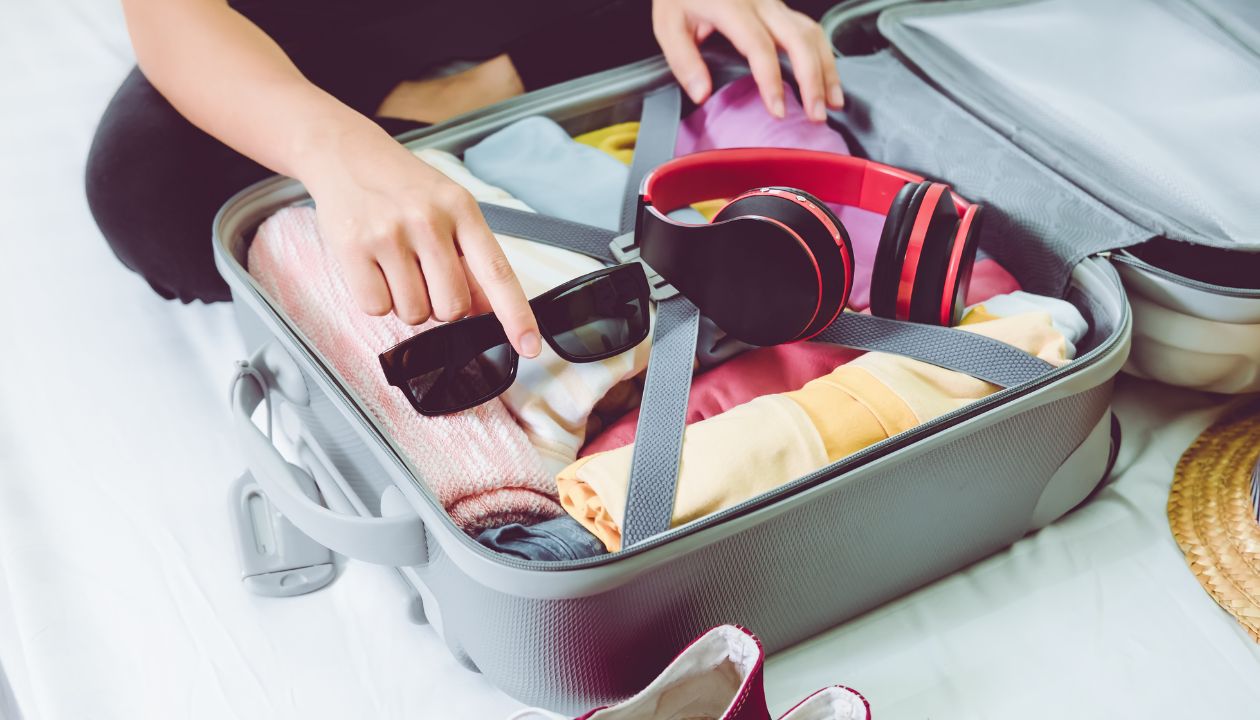
The Hidden Cost of Cheap Luggage: Why Sustainable Options Save Money Long-Term
The Truth No One Tells You About That “Great Deal”
You’re shopping for a suitcase. You find one that looks decent, rolls smoothly, has a few compartments—and the price is shockingly low. You buy it.

One trip later, the zipper jams. The handle feels loose. And the wheels? Wobbling like a newborn deer.
Sound familiar?
We’ve all been there. Cheap luggage looks like a bargain… until it isn’t. Because here’s what no one tells you:
Cheap luggage often costs more in the long run
It’s not just about poor quality. It’s about waste, stress, and a cycle of constant replacement that adds up—financially and environmentally.
Let’s unpack this, literally and figuratively.
What Makes Luggage “Cheap” in the First Place?
When we say "cheap," we’re not just talking about price. We’re talking about:
-
Low-grade materials like virgin plastic, thin polyester, and brittle zippers
-
Mass production with little to no ethical oversight
-
Zero repairability—if a wheel breaks, the whole bag is useless
-
No warranty or aftercare
-
Short-term design that doesn’t hold up beyond a few uses
Cheap luggage is built for profit, not performance.
The Real Price You Pay Over Time
Let’s do the math.
You buy a ₹4,000 bag that lasts you 3 trips.
You replace it three times over 2 years = ₹12,000
You lose time, deal with frustration, and generate waste.
Now imagine buying a ₹12,000 bag made from sustainable, repairable materials that lasts 10 years, comes with a warranty, and survives airport chaos.
One-time investment = less stress, less waste, more freedom.
The Hidden Costs of Cheap Luggage
🧳 1. Replacements Add Up
Over time, you’ll easily spend more than if you had just bought better luggage upfront.
The zipper breaks. The wheel squeaks. The handle jams at the worst time.
You throw it out. You buy again. It’s the same story on repeat.
💸 2. You Pay with Time and Hassle
-
Running to find a replacement before a trip
-
Lugging broken wheels through an airport
-
Ruining your clothes from a torn liner or faulty zip
Stress = cost. And when it hits during travel, it’s even worse.
🛢️ 3. Environmental Cost
Cheap luggage is made from materials that:
-
Can’t be recycled
-
Don’t biodegrade.
-
Break down into microplastics
-
End up in landfills after a short lifespan
Every bag thrown away is another burden on the planet.
🚫 4. No Repairs = Total Waste
With sustainable luggage, you can:
-
Replace the wheels.
-
Fix the handle
-
Repair the lining
With cheap luggage? If one part fails, the whole thing is trash.
So, What Makes Sustainable Luggage Worth It?
It’s not just the “eco” label. Real sustainable luggage is built to last, adapt, and support better practices.
Look for brands that offer:
-
Durable, recycled, or plant-based materials
-
Modular parts that can be repaired
-
Transparency about sourcing and labor
-
Recyclable design at end-of-life
-
Lifetime or extended warranties
Let’s Talk Materials
|
Cheap Luggage |
Sustainable Luggage |
|
ABS plastic |
Recycled PET (from plastic bottles) |
|
Low-grade nylon |
Organic canvas, hemp, recycled poly |
|
Faux leather (PVC) |
Cork, Piñatex (pineapple leather), apple leather |
|
No interior care |
Linings made from fishing nets or deadstock fabric |
Better materials = better performance = longer lifespan.
The Psychological Shift: Buy Once, Buy Right
There’s something empowering about investing in a bag that feels right. It carries not just your things but also your values.
You’re not chasing after deals or fearing breakage.
You’re choosing:
-
Fewer things
-
Better things
-
Things that grow old with you
Your bag becomes a travel companion—not a disposable item.
Real-Life Examples: What Long-Term Value Looks Like
🧳 Koora
-
Made from recycled bottles and car headlights
-
Lightweight yet tough as nails
-
Repairable parts and long lifespan
-
Eco-packaging + carbon offset shipping
-
Contributes to reforestation and education per purchase
You don’t just buy a bag. You support a smarter supply chain.
The Shift Is Already Happening
Travellers are done with waste.
Today’s generation is choosing:
-
Quality over quantity
-
Sustainability over flash
-
Function over fast fashion
This isn’t just about luggage—it’s about changing the way we consume.
Here’s What to Do Instead of Buying Cheap Again
-
Think of cost per use.
A ₹15,000 bag used for 100 trips = ₹150 per trip
A ₹5,000 bag used for 3 trips = ₹1,667 per trip
-
Read reviews—long-term ones, not first impressions
-
Check for repair policies and spare parts
-
Look for lifetime guarantees or extended warranties
-
Support brands with ethics, not just aesthetics.
Final Words: Stop Replacing. Start Investing.
Your luggage should travel as far as you do.
It should withstand bumpy rides, changing plans, and growing dreams.
So next time you’re tempted by a shiny discount, pause and ask:
"Will this last me five years? Or five days?”
Choose better. Pack better. Travel better.
And let your journey be just as intentional as your destination.



Leave a comment
This site is protected by hCaptcha and the hCaptcha Privacy Policy and Terms of Service apply.